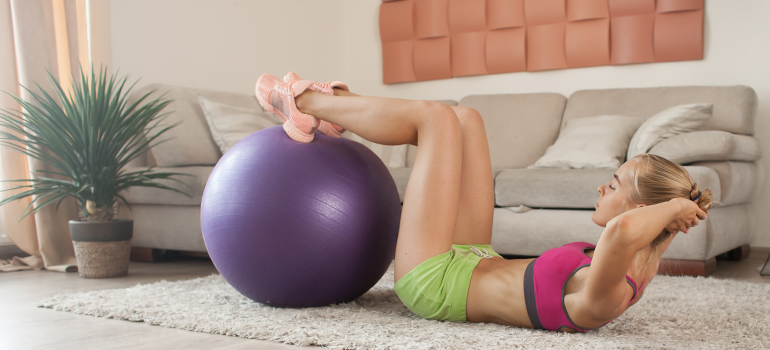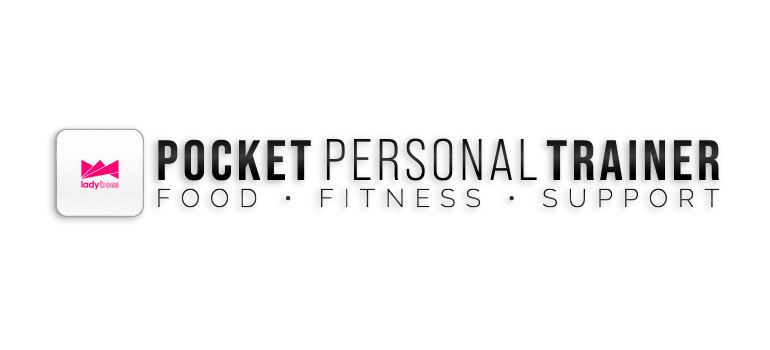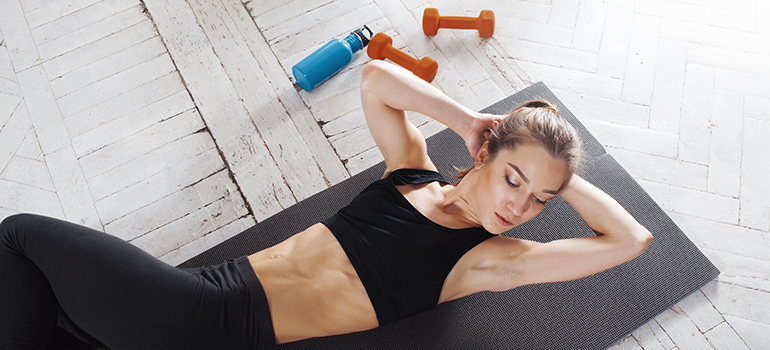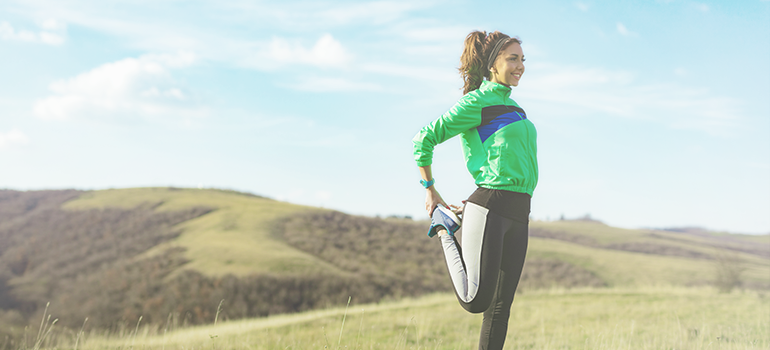With Our Best Leg Exercises for Women, Leg Day Just Became Fun!
Would you like firmer, leaner legs? Check these 10 best leg exercises for women that build strength and add definition.
#NeverSkipLegDay.
Yeah, you’ve probably seen the popular hashtag. Sure, you know that exercise is essential for weight loss and overall personal health. But, let’s be honest, we all tend to dread leg day.
Do you wince when you even see the phrase because, well, you somehow forgot about leg day? Oops.
Maybe you don’t have the fancy equipment generally associated with a leg workout, perhaps you’ve got bad knees, perhaps you simply don’t know where to start.
Don’t sweat it!
We’re here to take the dread out of leg day and set you on the course to get those more muscular, leaner legs! We’ve put together the best leg workouts for women just like you. No more fearing leg day, it’s time to embrace doing full-body exercise.
Game on, Leg Day!
Leg Movements

First of all, start by giving your legs some much-deserved credit, they are pretty fantastic!
Not only do they keep you standing tall, but they have gotten you this far already! Your legs have carried you around this Earth and allowed you to move in so many different ways.
Let’s celebrate our legs by beginning with these leg movements:

Hip Flexion and Extension
Think of hip flexion and extension as the movement used when walking.
We’re going to use this leg movement to open up our hips and glutes. Use a wall or chair for balance and swing each leg forward and backward.
Hip Abduction and Adduction
Hip abduction and adduction is a side to side movement.
Abduction is starting at your center and moving your leg away from your body then returning to the center.
Adduction is like crossing your legs, swinging your leg across your center.
Internal and External Rotation
Internal and external rotation is as it sounds; you turn your leg inward and outward.
For internal, sit and move one leg side to side behind the other. External rotation is similar, beginning at the internal position, but moving outward from the body.
Knee Flexion and Extension
You bend and straighten your knee all day long! That’s all knee flexion, and extension is.
Flexion is when you bend your knee and the lower leg curls behind you.
Extension is when you straighten your leg and knee out.
Plantar Flexion and Dorsiflexion
Another way to say point and flex your foot, Plantar flexion and dorsiflexion.
Plantar flexion is when the top of your foot moves away from the body, aka when you point your toes.
Dorsiflexion is when you look your toes toward the body.
These are essential movements that make up excellent leg strengthening exercises to which we will get. which we will get to.
Utilizing everyday movements, we are going to work toward more muscular, leaner legs. Quality leg workouts for women will employ all of these muscle actions.
From the hips to the ankle, we are going to explore exercises for every area of the leg.
These are essentially all of the movements that make up great leg strengthening exercises, which we’ll get to further below. Quality leg workouts for women will utilize all of these muscle actions.
Hips

Ladies, our hips don’t lie. That’s common knowledge.
What isn’t common knowledge is the structure and complexity of our lady hip joint anatomy. Thanks to our hip joint muscles, our legs have a wide range of motion.
The ball-and-socket joint atop the femur – better known as the thigh bone, creates the hip bone. It is essential to understand the power of our hips.
The more we know, the better we can keep our hips healthy and pain-free.
Hip Bones
- Hip Bones – The hip bones work together with the sacrum and coccyx to create the pelvis.
- Femur – Also known as the thigh bone, the femur is the longest and strongest bone in the body.
Muscles in the Hips
- The Glutes – The gluteal muscles–maximus, medius, and minimus–are the anatomical structures that create that beautiful booty of yours. We compiled our favorite Top 10 Glute Exercises to help strengthen and perfect those hips and that peach.
- There are other upper leg muscles, such as the iliopsoas, sartorius, tensor fasciae latae, deep rotators, and others that we will address in more detail below that assist in hip actions.
ACE Fitness and ExRx.net help us out with the following tables of muscle actions


Upper Leg

You’ve got your thigh, right? What else is there? Tons!
Your upper leg spans the length of the hips and knees–major joints with many related muscles to create a great variety of movements. You’ve got three major muscle groups surrounding your femur. The quadriceps are in front, the hamstrings in the back, and the adductors make up your inner thighs.
Check out some tremendous inner-thigh exercises.
Upper Leg Bone
Femur – Referred to above.
Muscles in the Femur
- Quadriceps – Called the quads for short, the quadriceps straighten the leg and assist in hip flexion. As the name suggests, four muscles make-up quads: vastus medialis, vastus lateralis, vastus intermedius, and rectus femoris.
- Hamstrings – The hamstrings, a.k.a hammies, are used to bend the knee and help to extend the leg backward. The muscles that compose hamstrings are: the biceps femoris, semitendinosus, and semimembranosus.
Adductors – Essentially, your inner thighs, your adductors work to bring your leg in toward your body. There are five muscles used in adduction, including the pectineus and gracilis.
Bones, Ligaments, and Tendons in the Knee

The knee is the joint where the upper leg and lower leg come together. It is a hinge joint that allows for bending and straightening.
The knee is the largest joint in the body. It’s incredibly complex, and, as you may know from experience, prone to injury.
Are you avoiding leg exercises because of your knees? Girl, if you’ve got knee problems, the leg exercises below are the best thing that you can do for them!
As said by OrthoInfo, strengthening those upper leg muscles that support the knee will help to absorb shock and reduce stress on that joint.
Knee Bones
- Femur – The thigh bone, referred to above.
- Patella – The kneecap, the largest of the sesamoid bones, works to protect the complex joint and provides extra leverage for knee extension.
- Tibia – The shin bone, referred to below.
Ligaments – Connect Bones to Bones
- Cruciate ligaments – The anterior (ACL) and posterior (PCL) cruciate ligaments control the back and forth motion of the knee.
- Collateral ligaments – The collateral ligaments control the side to side motion of the knee.
Tendons Connect Muscles to Bones
The quadriceps tendon connects the quadriceps muscles to the patella, and the patellar tendon (which is a ligament) extends beyond the patella to the tibia.

Lower Leg Bones and Muscles

Who doesn’t want great calves! Whether you’re a flats kind of gal or you love to rock those heels, the legs workout below will help shape and strengthen those lower legs to give you the confidence to strut in any shoes.
Your lower leg spans the distance between the knee and the ankle. It includes the bones, the tibia and fibula, and the familiar calf muscles along with many more.
Bones
- Tibia – The shin bone, the longer of the two bones in the lower leg, is the main weight-bearing bone.
- Fibula – The tibia’s sidekick serves as a place of attachment for many of the lower leg muscles.
Muscles
- Gastrocnemius – The upper half of the calf muscle works with the soleus to plantarflex the ankle (many refer to this action as ‘pointing your toe’), and it assists in bending the knee.
- Soleus: The lower half of the calf muscle, works with the gastrocnemius to plantarflex the ankle and bend the knee.
- Anterior Tibialis – The anterior tib, as its name suggests, is on the front of your leg. It dorsiflexes the ankle (pulls the toes back toward the shin).
- There are other muscles in the lower leg, such as the plantaris, popliteus, peroneus muscles, and more that assist in knee and ankle actions.
Ankle Bones and Ligaments

The ankle is the joint where the lower leg and foot meet. Did you know that your ankle is actually made up of three separate joints? Crazy, right? The primary ankle joint is a hinge joint like the knee and allows for the muscle actions described above–plantar flexion and dorsiflexion.
Bone
The end of the tibia and fibula bones, the talus (heel) of your foot, are what comprise the bones in your ankle.
Ligaments
Deltoid and Lateral Ligaments in the ankle work to maintain stability and prevent you from rolling your ankle.
10 Best Leg Exercises for Women
Alrighty, it’s time to stop sitting and do a legs workout!
Among leg workouts for women, this one is super user-friendly. Nothing needed but your capable body, a can-do attitude, and a little bit of space.
Choose from three on up to all ten exercises, aiming to complete at least three sets.
You got this, Girl!
Squats
The basic squat is a leg-strengthening staple because it is a functional multi-joint action that utilizes just about every major muscle group in the leg.

The Muscles: Quadriceps, gluteus maximus, adductor magnus, soleus
The Movement:
- Start with your feet firmly planted about hip-width apart.
- Bend your knees and send your hips backward as if you were sitting down into a chair, keeping your weight back into your heels. Your torso will naturally come forward. Hands can be in front of you, at your hips, or raised above your head.
- Stand back up and repeat for 12-15 reps.
Sumo Squats
The sumo squat builds on the basic squat, but adds in some lateral rotation for some extra inner thigh work and emphasizes different aspects of the quadriceps.

The Muscles: Quadriceps, gluteus maximus, adductor magnus, soleus
The Movement:
- Start with your feet firmly planted about hip-width apart. Your feet will be turned outward about 45 degrees.
- Bend your knees, being sure to track your knees in the same plane as your toes. Your body will remain upright. Hands can be in front of you, at your hips, or raised above your head.
- Stand back up and repeat for 12-15 reps.
Lunges
Lunges are very similar to squats in their muscle action and functional movement. They add an additional stability challenge as you shift your balance from one leg to another.

The Muscles: Quadriceps, gluteus maximus, adductor magnus, soleus
The Movement:
- Start standing with your feet together. Hands can be in front of you, at your hips, or raised above your head.
- Take a large controlled step backwards with your right foot, keeping the heel lifted, planting the ball of your foot down.
- Lower your hips until your front thigh becomes parallel to the floor, maintaining your knee over your ankle. Think of creating a 90-degree angle with both the front and the back knees.
- With control, step the right foot back forward and come back to your starting position. This is one rep.
- Alternate by stepping the left foot backward.
- Repeat alternating for 20-30 reps.
Calf Raises
Don’t let the simplicity of calf raises fool you. These babies burn. You’re also challenging your stability and balance, giving your core an extra challenge.

The Muscles: Gastrocnemius, soleus
The Movement:
- Start with your feet firmly planted about hip-width apart.
- Maintaining your posture, elevate your heels off the ground and come onto your toes.
- With control, lower yourself back to your starting position.
- Repeat for 12-15 reps.
Single-Leg Squat

Also known as the pistol squat, this bad boy works the entire length of your leg one side at a time. These are especially great if you have any sort of muscular imbalances. Most of us have a preferred, easier side.
The Muscles: Quadriceps, gluteus maximus, adductor magnus, soleus
The Movement:
- Start with your weight supported on your right leg. Your left leg will hover above the floor.
- Bend your right knee and send your hips backward as if you were sitting down into a chair, keeping your weight back into your right heel. Your torso will naturally come forward. Hands can be in front of you, at your hips, or raised above your head.
- Stand straighten your right leg and repeat for 10-12 reps.
- Repeat on the left side
Forward Kicks

Hiya! Forward kicks are great for developing strength in your hip flexors as well as building strength in your core and stability through your ankles.
The Muscles: Iliopsoas, quadriceps, gastrocnemius
The Movement:
- Start with your feet firmly planted about hip-width apart, arms bent held up in front of you.
- Raise your right thigh with a bent knee and then extend your right leg straight, pointing your toes.
- With control, lower your right leg back down to starting position. This is one rep.
- Alternate back and forth between right and left legs for 16-20 reps.
Reverse Kicks

Also known as donkey kicks, this exercise is fantastic for strengthening through the hamstrings and for perking up those buns. As with the front kicks, it also engages core strength and builds stabilization through the ankles.
The Muscles: Hamstrings, gluteus maximus, adductor magnus, anterior tibialis
The Movement:
- Start with your feet firmly planted about hip-width apart with a soft bend in your knees, arms held up in front of you.
- Pick up your right foot, bringing your heel toward your bottom and then extending your leg straight–like a donkey.
- Carefully place your right foot back down to the starting position. This is one rep.
- Alternate back and forth between right and left legs for 16-20 reps.
Duck Walks Forward

Yeah, they’re kind of goofy, but duck walks are super effective! It’s a traveling squat that places particular emphasis on the quads.
The Muscles: Quadriceps, Gluteus Maximus, Adductor Magnus, Soleus, Anterior Tibialis
The Movement:
- Start with your feet firmly planted about hip-width apart.
- Bend your knees and send your hips backward as if you were sitting down into a chair, keeping your weight back into your heels. Your torso will naturally come forward. Hands can be in front of you, at your hips, or raised above your head.
- Staying low, step forward four paces.
- Turn around and step forward four paces.
- Repeat for 20 paces.
Duck Walks Backward

Doing the duck walk backward places more emphasis on the glutes and hamstrings. Make sure you’ve got plenty of space behind you with nothing to trip on!
The Muscles: Quadriceps, Gluteus Maximus, Adductor Magnus, Soleus
The Movement:
- Start with your feet firmly planted about hip-width apart.
- Bend your knees and send your hips backward as if you were sitting down into a chair, keeping your weight back into your heels. Your torso will naturally come forward. Hands can be in front of you, at your hips, or raised above your head.
- Staying low, step backward four paces.
- Turn around and step forward four paces.
- Repeat for 20 paces.
Single-Leg, Still Leg Pendulum

Are you ready? This ‘simple’ movement is quite the balance challenge! Along with toning your backside and hamstrings, this exercise is great for building knee and ankle stability.
The Muscles: Hamstrings, gluteus maximus, adductor magnus
The Movement:
- Start with your feet firmly planted about hip-width apart with a soft bend in the knees.
- Begin to shift your weight to your left leg as you extend your right leg behind you. Your torso will come forward as your leg lifts until both are parallel with the floor, maintain one long line from the top of your head to the bottom of your foot.
- With control, lower your right leg back down simultaneously lifting your torso back up to the starting position. This is one rep.
- Repeat 10 reps on both legs.
Conclusion
If you loved these exercises, be sure to check out the FREE LadyBossⓇ 7 Day Experience for many more workouts just like this!














